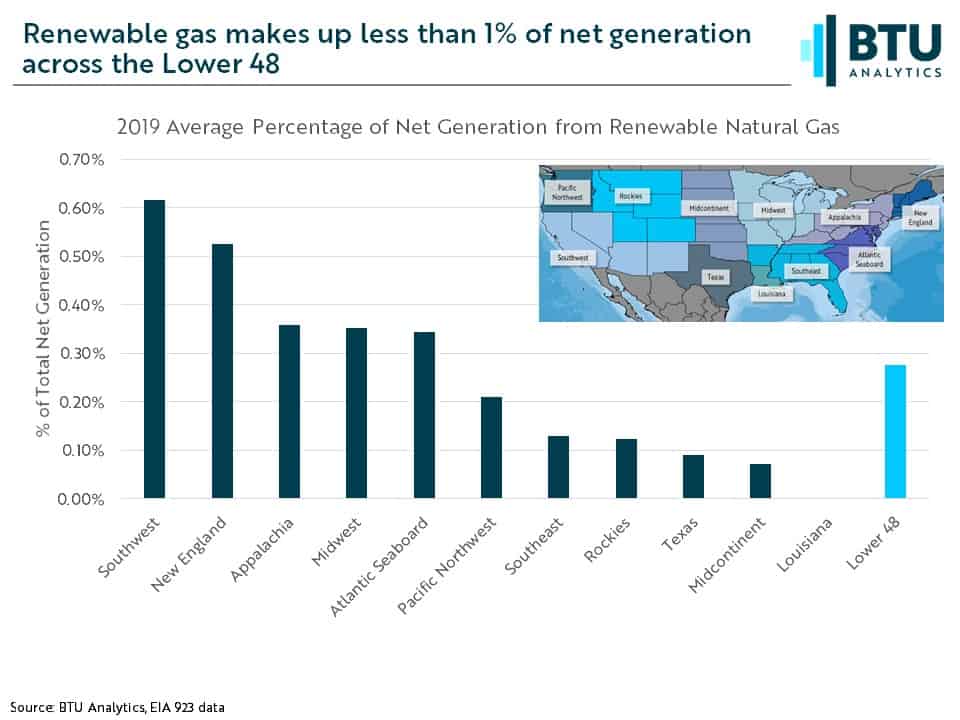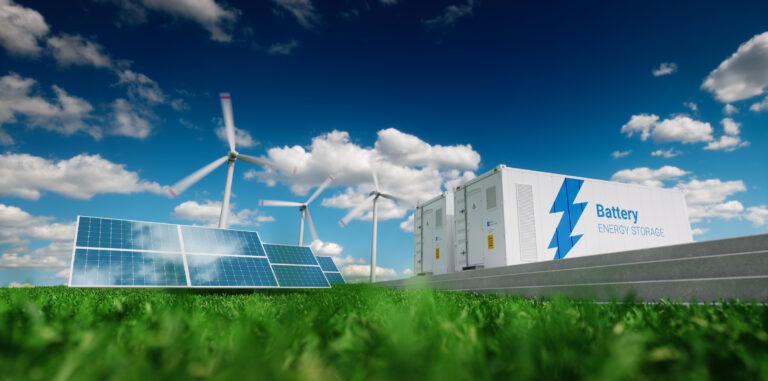Renewable natural gas almost sounds like an oxymoron, but as the push for low-carbon sources of energy continues, renewable gas is increasingly making headlines. Renewable gas (also known as biogas) is produced via the breakdown of biological products, which produces methane. The methane is captured, conditioned to pipeline quality standards, and then delivered to end users, typically for transportation fuels or electricity generation. Though still a small industry, renewable gas has advantages over conventional natural gas, such as being carbon neutral which leads to producers capturing premium pricing compared to conventional natural gas. This Energy Insight will be a brief primer on renewable gas and why those in the energy industry should pay attention to this small but emerging resource.
There are four primary sources of renewable gas: landfills, agriculture, food waste, and wastewater treatment plants. In the Lower 48, landfills are the most prevalent renewable gas facilities, followed by agriculture and wastewater treatment facilities. Based on data from the Argonne National Laboratory, Appalachia and the Midwest have the most operational renewable gas facilities. Areas with high population densities (more landfills and wastewater treatment) or a big agricultural industry are most likely to have renewable gas producers. At a state level for example, Texas has ten landfill facilities and Indiana has three agriculture facilities. California (grouped in the ‘Southwest’ below) has the second highest total number of facilities at nine facilities.

While California and Texas lead in total facilities in part due to their high populations, California renewable gas producers also have strong economic incentives to produce renewable gas. Across the US, renewable gas producers can receive a higher price for their gas than conventional producers because of the EPA’s Renewable Fuel Standards program. In California, the Low Carbon Fuel Standard program adds an additional premium to renewable gas. Both programs are carbon credit programs that allow renewable fuel producers to generate credits and then sell those credits to other facilities that must meet program requirements. On top of a regional gas commodity price, renewable gas producers then also receive premiums from these programs. An EPA report from late 2018 calculated that a California wastewater treatment plant could receive up to a $40/MMBtu premium over Henry Hub. Facilities with the potential to produce renewable gas have economic incentive to enter the market to capture these premiums.
In addition, renewable gas is used for electricity generation. Renewable gas’s market share in generation is small in most regions, averaging only 0.28% of total Lower 48 net generation in 2019. In the Southwest (which includes California), renewable gas averaged over 0.60% of total net generation last year.

Renewable gas has a stark advantage over both wind and solar in that it is a clean energy that doesn’t have the same intermittent constraints. Renewable gas can be used at power plants whenever it is needed, just like conventional gas. As emissions standards get stricter across the country, especially in the Northeast and New England, as we’ve written about previously, renewable gas could help utilities meet these standards while still providing a reliable source of energy outside of peak wind and solar times.
Conventional natural gas still dwarfs renewable gas in power markets, but as states push for lower carbon emissions, renewable gas is an option for reliable, clean energy. A drive for more renewable gas could lead to more renewable gas entering the interstate pipeline system, putting these molecules in direct competition with conventional natural gas. On average this year, only about 35 MMcf/d of renewable gas enters the interstate pipeline system, based on the interstate flow sample. Note the interstate pipeline sample for renewable natural gas has been pretty flat since January 2019.

Though renewable gas has some advantages compared to conventional natural gas, it will likely take quite some time before renewable gas poses any threat to conventional natural gas producers. For now, solar and wind are still the biggest renewable threats to natural gas in the power market as the market rallies around both to meet renewable and low carbon goals. BTU’s Power View service is your one-stop-shop for in-depth analysis of power development throughout the US.









